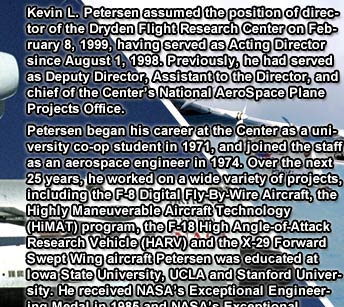—— What role does the Dryden Flight Research Center play in NASA?
The Dryden Flight Research Center is one of 10 NASA centers that are spread across the United States. Our particular role in the agency is to conduct advanced aeronautical flight research and testing, and to support space technology and science activities for the agency. So as a vehicle is developed that might be used for a space application, we might do some of the aeronautical testing. For example, we might be charged with testing the landing phases, to ensure that the vehicle can land and return properly.
So generally, technologies related to advanced vehicles are developed in other parts of the agency or the industry in general, and we are asked to help test and validate those technologies in flight.
—— What is it like to develop aircraft as a government agency?
At NASA and at NASA-Dryden we generally work in collaboration with industry and other government agencies. So we're not really in the business of developing aircraft from the start, but we are in the business of testing the aircraft and ensuring that the products actually work as defined. And we help in the development, to ensure that these aircraft work as planned.
As far as NASA is concerned, we generally do not develop entire aircraft. We help with the development of certain technologies on aircraft, and then either private industry or other government agencies, like the Air Force for example, would take some of these advanced technology concepts and incorporate them into their aircraft. And then, once they develop their aircraft, they may come back to us to help validate those technologies and ensure that they work as desired.













